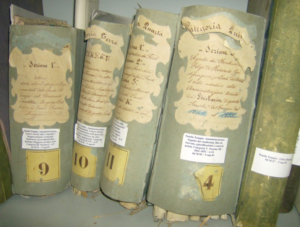Jewish cultural heritage, unity is strength
 For the safeguarding and promotion of the Italian Jewish cultural heritage, the implementation of “an institutional synergy that places full understanding and value at the center, encouraging the training of a new generation of experts” is essential. This is the wish expressed by Dario Disegni, president of the Jewish Cultural Heritage Foundation in Italy, during the online presentation of the book “Sub anulo piscatoris. A register and a Jewish community in the Rome of the popes (XVI-XVIII centuries)”, the work of the young scholar Lucrezia Signorello and the result of a synergy between the same Foundation, of which Signorello had won a research grant in 2017, the Jewish Community of Rome and its historical archive. A theme, that of the ghettos, which is “of great interest” in Rome and in the rest of the country. It will also be the focus of the next exhibition of the National Museum of Italian Judaism and the Shoah in Ferrara, with the inauguration scheduled in October, Disegni recalled.
For the safeguarding and promotion of the Italian Jewish cultural heritage, the implementation of “an institutional synergy that places full understanding and value at the center, encouraging the training of a new generation of experts” is essential. This is the wish expressed by Dario Disegni, president of the Jewish Cultural Heritage Foundation in Italy, during the online presentation of the book “Sub anulo piscatoris. A register and a Jewish community in the Rome of the popes (XVI-XVIII centuries)”, the work of the young scholar Lucrezia Signorello and the result of a synergy between the same Foundation, of which Signorello had won a research grant in 2017, the Jewish Community of Rome and its historical archive. A theme, that of the ghettos, which is “of great interest” in Rome and in the rest of the country. It will also be the focus of the next exhibition of the National Museum of Italian Judaism and the Shoah in Ferrara, with the inauguration scheduled in October, Disegni recalled.
Ruth Dureghello, president of the Community of Rome, also focused on the importance of collaboration between different entities, underlining how the volume presented yesterday, published by the Florentine publisher Angelo Pontecorboli, is “a concrete example of this type of approach”.
In his essay Signorello proposes a look on the life of Roman Jews in the complex period of forced segregation. From the careful study of the documents and their elaboration, what emerges, for Dureghello, is “something different” compared to what is sometimes claimed. In fact, in the pages of the book an “active and reactive Community emerges, which does not refuse to affirm its otherness and which offers great examples of authority and value”.
The presentation, led by Giorgio Segrè, inspired numerous ideas. Besides the author herself, it was attended by Claudio Procaccia, director of the Community Department dedicated to Cultural Heritage and Activities, Germano Maifreda, professor of Economic History at the University of Milan, and Rabbi Amedeo Spagnoletto, director of the MEIS. Signorello was introduced by her tutor, the historian Serena Di Nepi.
“Every time a very young scholar like Lucrezia offers us the possibility to explore themes related to the archive – affirmed Rabbi Spagnoletto – it is as if she enlarged it, made it more alive with memories. The same happens with the heart, which is an integral and eternal part of this community”.
Translated by Oyebuchi Lucia Leonard and revised by Silvia Bozzo, students at Trieste University and the Advanced School for Interpreters and Translators of Trieste University, interns at the newspaper office of the Union of the Italian Jewish Communities.
